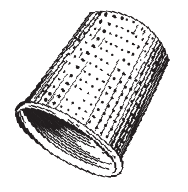I consider the fragility first, rather than the contour
of its curves, the ribbons of reflected light in its glaze.
For me, it becomes a study: shape hollowed, the earth’s
once-pliant, heavy, wet clay kiln-fired to brittle bisque.
This solitary pear I have kept beside a museum postcard:
Cezanne’s plate of three, stilled to perfection in strokes
of watercolor and gouache, pale yellow, a suggestion
of chartreuse, as though it had once been possible
to stop time on a single piece of cream laid paper.
Maybe this is what hope looks like, this rendering
of an object, preserved in its making. Or, what if
this is the meaning of sacred? A vision held. As a child,
I spent early morning hours beside my grandmother
picking up pears, too-ripe and fallen to the ground,
each one gathered into the rolled hem
of her housedress. I am grateful for each slippery
fruit, for the wide-open gashes spilling their sweet
juice, my fingers sticky, eager to peel away the skin
with all of its scars, to slice into pieces what fills
up each waiting dish, sprinkled with flour,
draped with kneaded dough. My grandmother’s
hands stiffen with disease. For me, it becomes a study:
each knuckle a knot, bones jutting sharp, set shallow
beneath translucent skin. Veins swell like rivers,
the blue of forget-me-nots growing wild in her garden.
She grips the paring knife, pulls it through
flesh, bruised and gritty, then holds it still, as though
it is possible to stop time on any ordinary day.

